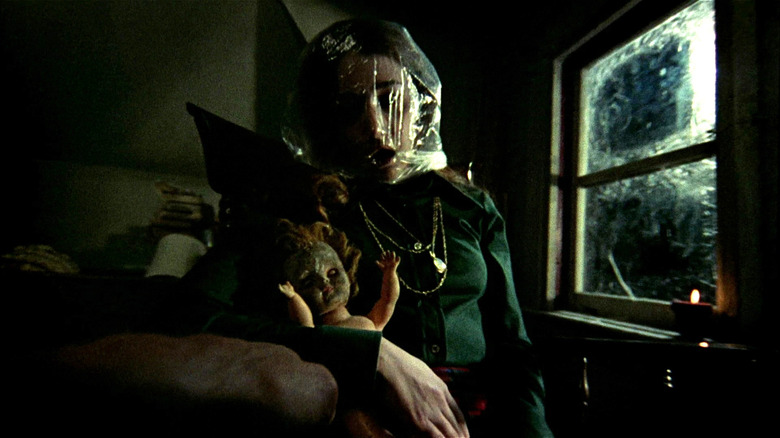
In the film world, the term "grindhouse" gets thrown around a lot, but what does it actually mean? The term grindhouse is derived from a name given to movie theaters that would primarily screen exploitation films. Often these theaters had once been relatively upscale, but after years of neglect became run-down. Around the 1960s through the 1980s, new owners would take over these theaters and play low-budget independent films, often specializing in double (even triple) features featuring lots of sex, action, and graphic violence.
Grindhouse can be a bit of a nebulous category, as films that fall under that umbrella also tend to overlap with other genres such as horror, action, martial arts, science fiction, and many others. A good rule of thumb when identifying a grindhouse flick is to ask yourself these questions: Would this film be screened at midnight in a grungy, downmarket theater? Also, would this movie be unbearably awkward to watch with my parents in the room? Finally, does this movie feature one (or a combination) of the three G's: gore, grime, and genitalia? If you answered yes to all, then it's probably a grindhouse film. If you've never watched one of these movies and you're looking for a place to start, then look no further. Here are 20 of the best grindhouse movies ranked in all their full-frontal, visceral, blood-spattered glory.
The Vampire Lovers (1970)
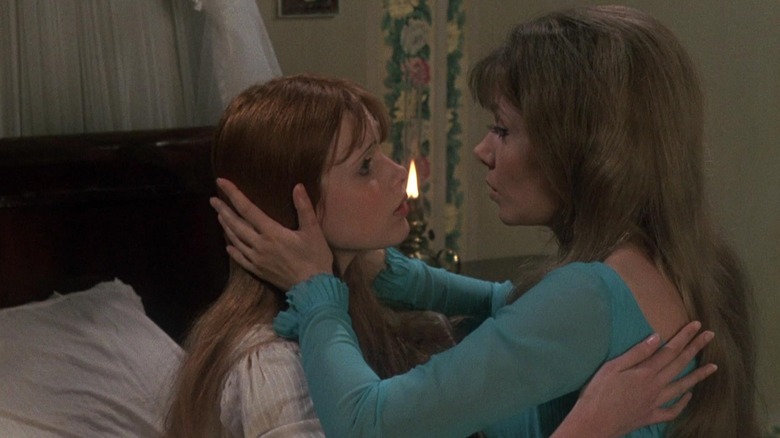
"If you dare ... taste the deadly passion of the BLOOD-NYMPHS!" reads one of the posters for Roy Ward Baker's 1970 film "The Vampire Lovers." Other similarly evocative taglines for the movie include "Beautiful temptress ... or Bloodthirsty monster?" and "An erotic nightmare of tormented lusts that throb in headless, undead bodies!" Hell yeah, that's what I'm talking about.
"The Vampire Lovers" is the first installment in the Karnstein Trilogy, a series of gothic horror vampire movies from famous British horror studio Hammer Film Productions. The film's story is loosely based on the 1872 Sheridan Le Fanu novel "Carmilla," famous for its heavy lesbian subtext which, let's be honest, frequently crosses over into text. In "The Vampire Lovers," Carmilla appears to seduce innocents and feast on their blood, manipulating her way into the lives of two young women, Laura and Emma, until her plans are foiled by a stake through the heart and a dose of good old fashioned decapitation. Unafraid of violence, sexuality, and quite a bit of nudity, "The Vampire Lovers" is a wild, sexy, blood-soaked tale that helped inject overt eroticism back into vampire stories.
Race With The Devil (1975)
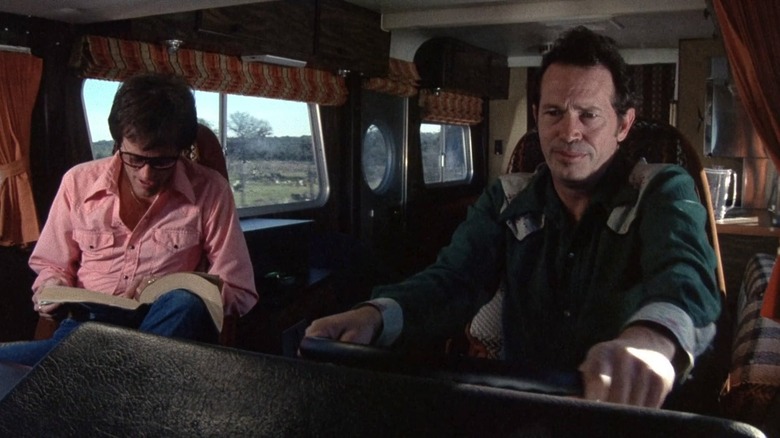
You've heard of horror movies. You've heard of action movies. You've heard of car chase movies. Now, what about a movie that's all three at once? Jack Starrett's 1975 film "Race with the Devil" combines cars, chaos, and cultists for one wild ride. After two couples taking an RV from Texas to Colorado on a cross-country vacation witness a Satanic ritual, they find themselves in the middle of a fast and furious fight for their lives.
Roger Marsh (Peter Fonda) and Frank Stewart (Warren Oates) just want to take a break from running their successful motorcycle dealership. They pile into an RV with their wives Kelly (Lara Parker) and Alice (Loretta Swit) and unwind with a well-deserved ski vacation in Aspen. Unfortunately, fate and a devil-worshipping cult have other plans, and the skiing will have to wait until they escape from the apparent droves of Satanic cultists crawling all over 1970s Texas. "Race with the Devil" is alternately ridiculous and genuinely tense, with nonstop action, some effective scares, and car chase sequences on par with "The Road Warrior."
Vampyros Lesbos (1971)
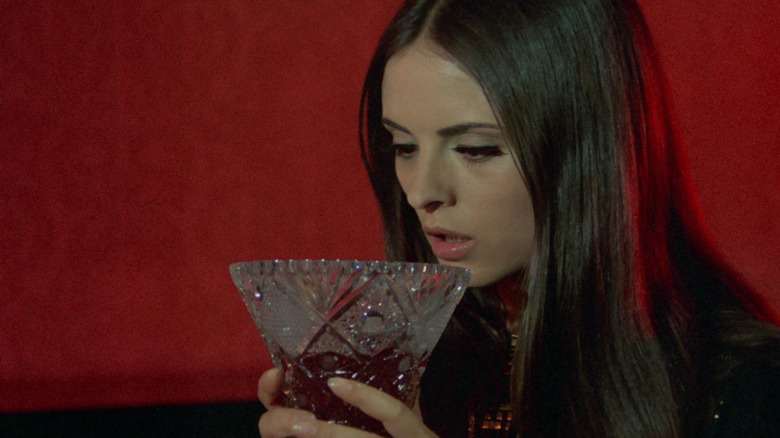
Hide your wives, because beautiful women are prowling the night looking for the chance to steal them away into an underbelly of sin, blood, and unbridled lust! That's right, tremble with fear and anticipation: The lesbian vampires have struck again. This time it's right there in the title, you already know pretty much everything you need from those two words. This erotic horror film stars Ewa Strömberg as Linda, an American woman working in Turkey and suffering from a string of strange dreams about a seductive vampire woman. When she travels to a remote island, she meets Countess Nadine Carody (Soledad Miranda), the bloodsucking temptress from her dreams.
If you're coming to "Vampyros Lesbos" for a coherent, grounded plot or Oscar-worthy acting and dialogue, then you should probably skip it. If you're searching for a hypnotic overload of sexuality and disorienting dreamlike direction, then step into Jesús Franco's lair for a little while and just let the experience wash over you. After the film's 89 minute run, you'll emerge as one of Countess Carody's victims: entranced, dazed, and a little bit unsure if any of that just happened, or if it was some sort of half-forgotten sensual nightmare.
Black Christmas (1974)
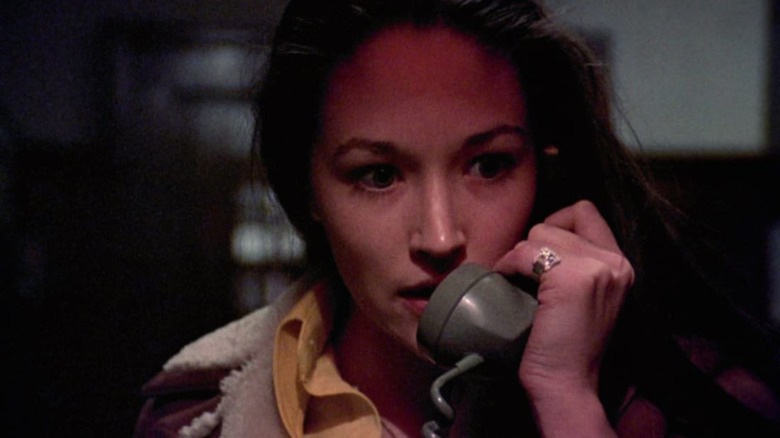
Years before Michael Meyers was stalking his way through Haddonfield or Jason Voorhees was chopping up camp counselors, Billy was sending holiday chills down sorority girl spines in Bob Clark's "Black Christmas." If you're a slasher fan, you have this film to thank for the genre as we know it today. The Canadian slasher has the feeling of an urban legend told in the late-night hours of a sleepover or whispered around a campfire.
It's a simple story on the surface: A group of sorority sisters receives a series of increasingly bizarre and threatening phone calls from an anonymous man, who begins picking them off one by one. The film offers some classic kills, including one very notable use of a ceramic unicorn. With a mix of inventive filmmaking (first-person POV shots from the killer's perspective) and some surprisingly progressive gender politics, the film is now considered one of the best horror movies of all time. "Black Christmas" is a gleefully grim reminder to always trace prank calls because you never know where they might be coming from.
Coffy (1973)
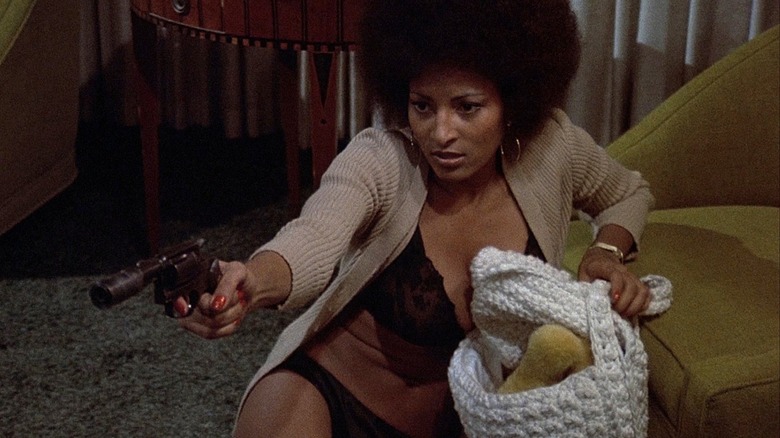
Pam Grier is a trailblazing icon of action cinema, considered by many to be Hollywood's first female action star. She brought explosive star power, energy, and undeniable acting talent to films like "Foxy Brown," "Scream Blacula Scream," and Quentin Tarantino's "Jackie Brown." Before all of those, however, she was bursting onto the Blaxploitation film scene in Jack Hill's 1973 picture "Coffy." Grier played the titular role of a nurse turned vigilante taking on corruption, organized crime, and the establishment.
The film's tagline read: "They call her Coffy, and she'll cream you." Coffy is the nickname of Flower Child Coffin, a woman who seeks revenge on those responsible for her younger sister's heroin addiction along with the violence and pain that afflicts her city. By day Coffy works in the operating room, and by night she is undercover in the city's underworld, taking out pimps and mob bosses one by one. Pam Grier kicks major ass in this film, and it's easy to root for Coffy in her quest to avenge her sister. Though some critics (looking at you, Roger Ebert) panned the film at the time of its release, the skill on display from Hill, Grier, and the rest of the cast and crew is undeniable.
Switchblade Sisters (1975)
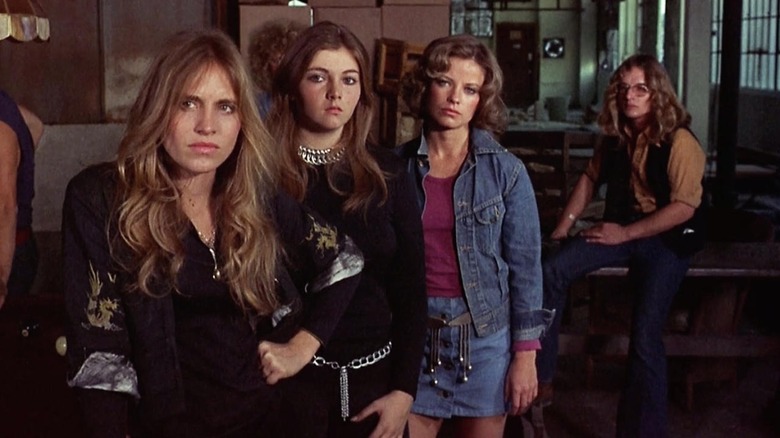
If there was one thing that 1970s exploitation cinema couldn't get enough of it was young women doing crimes. Stories about women's prisons were a subgenre all their own, but there wasn't just interest in girls getting violent in jail. Audiences and filmmakers alike were also obsessed with the sort of behavior that could land them behind bars. Jack Hill's "Switchblade Sisters" is the story of a girl gang, made up of teenage high school students, and all of the danger and debauchery that comes along with that life.
A portion of "Switchblade Sisters" does take place during one character's incarceration in a Juvenile Detention Center, but most of the action happens on the outside. Maggie (Joanne Nail) is a young girl who transfers to a new high school across town and finds the area dominated by a gang of young men called the Silver Daggers as well as their female counterparts the Dagger Debs. Maggie is unwittingly pulled into their world, growing close to the Debs' leader Lace in a friendship that later turns sour when Maggie takes over as leader of the pack. In case the summary didn't clue you in, "Switchblade Sisters" is not a particularly lighthearted or happy story. If you're looking for a film you can laugh along with between fistfuls of popcorn, this isn't the one. It explores violence, abuse, sexual assault, abortion, and the dangers of gang life.
The Beyond (1981)
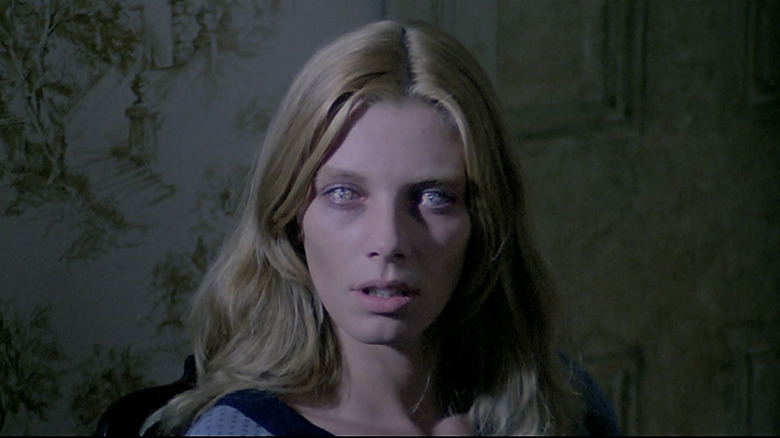
The work of Italian director Lucio Fulci is not for everybody, and his films can be a bit of an acquired taste. Of course, if you can't stand Fulci's excessive use of gore and routinely incomprehensible storylines then that's perfectly fine! If you're interested in a little descent into madness, and open to being just as frustrated as you are entertained by brilliantly bleak visuals, then I invite you to follow me into "The Beyond."
"The Beyond" is the second film in Fulci's "Gates of Hell" trilogy, each of which focuses on (you guessed it) a surprising gateway to the realm of the damned. In this installment, a woman inherits a hotel in rural Louisiana that just so happens to be the sire of a terrible murder and houses the entrance to one of the seven gates of hell. The film lacks narrative consistency but makes up for it with surreal cinematography, an atmospheric, eerie score, and some truly impressive practical effects. If there's one thing a Fulci horror film will always deliver on it is buckets of blood and ultra-violent deaths.
Five Fingers Of Death (1972)
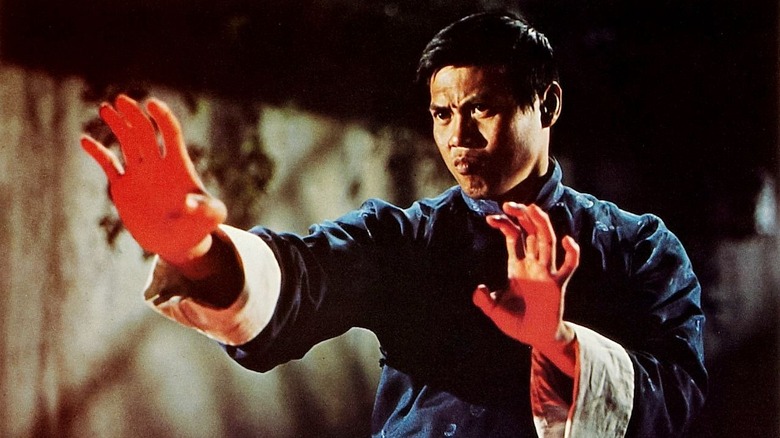
In the 1970s America entered a "kung-fu craze," and an obsession with martial arts movies. Dominated by East Asian styles of hand-to-hand combat, most often Kung Fu, this craze centered around films coming primarily out of China. One such flick was "King Boxer," also known as "Five Fingers of Death," a 1972 Hong Kong film from director Jeong Chang-hwa starring established martial arts film actor Lo Lieh.
Lieh plays a young, promising martial arts student named Chih-Hao, who has fallen in love with his master's daughter Ying-Ying (Wang Ping). In order to prove himself worthy of his beloved's hand, Chih-Hao must compete in an upcoming tournament against another martial arts school, headed by the corrupt Meng Tung-Shan. The film was released to an American audience by Warner Brothers in 1973, followed by "Enter the Dragon" later that same year. It is sharply directed, visually vibrant, and the elaborate fight scenes complete with slow-motion jumps and flurries of fists are fun as hell to watch.
Maniac (1980)
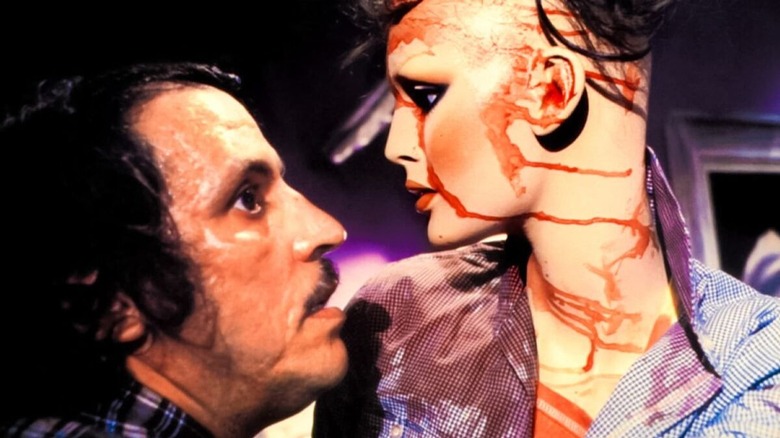
A lead performance can sometimes make or break a film. No matter how good the direction or script is, the lead actor is quite literally the face of the story, and they can either sink the ship or steer it safely into harbor. When you're trying to tell the psychological horror story of a disturbed serial killer, you need an actor who can truly bring that role to life in all of its ugliness, terror, and dysfunction. William Lustig's "Maniac" (not to be confused with the 2012 remake of the same name) has a daring lead at the helm in the form of Joe Spinell as the titular "Maniac."
Spinell plays Frank Zito, a New York City serial killer who slaughters and scalps women as a result of childhood trauma at the hands of an abusive mother. "Maniac" is not an easy watch by any means. Like its protagonist, it is vicious, hard to look at, and seems to relish in a sleazy kind of darkness. However, Spinnell's performance takes the film beyond the realm of a simple soulless splatterfest, as he brings a kind of care and nuance to his portrayal that Zito himself would scarcely deserve. Even if there is nothing else to applaud in "Maniac" (a concept that vastly depends on who you ask) the stomach-turning yet captivating work of Joe Spinnell deserves recognition.
Videodrome (1983)
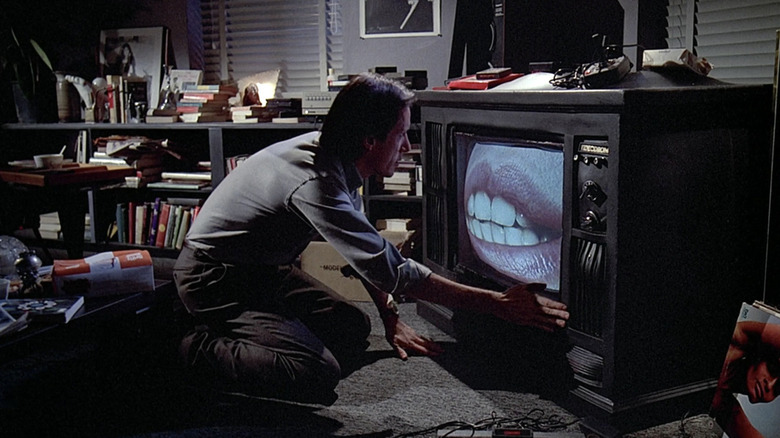
Though many grindhouse films try their mangled hand at body horror, they just can't top David Cronenberg, the king of goo and gruesomeness. From melting Jeff Goldblum in "The Fly" to heads popping like grapes in "Scanners," there's no limit to the creative ways his films maim the human form. One of his most brilliant (and grotesque) works is 1983's science fiction horror film "Videodrome."
The film is set in Toronto, where Max Renn (James Woods) works as the president of an Ultra High Frequency television network. When he discovers a broadcast signal depicting violence and torture of unknown victims entitled "Videodrome," Max is pulled into a web of secrets, conspiracy, and mind control. "Videodrome" combines social and political commentary with eroticism, perversion, unique visuals, and some truly bizarre filmmaking. One of the most notable practical effects in the film, in a choice that is oh-so-deliciously Cronenberg, is a vaginal-looking slit that appears on Max's abdomen, which a tape is later inserted in as if he were a human VCR. And that's just one of the bizarre, mind-melting moments in the film! "Long live the new flesh," and long live Cronenberg's psychosexual nightmare-scapes.
Night Of The Living Dead (1968)
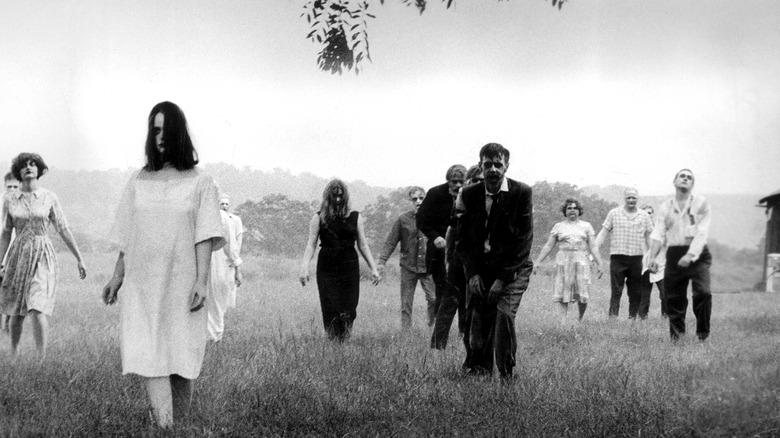
In 1968, audiences were stunned and horrified as they sat in their seats for a Sunday matinee premiere screening of George Romero's seminal horror classic "Night of the Living Dead," a film that brought zombies lurching into the American horror canon. Moviegoers were unprepared for the film's graphic gore, scenes of reanimated corpses shoveling entrails into their mouths, ghouls taking shotgun blasts to the head, and a whole host of other violent scenes rarely encountered in mainstream films at the time.
The story follows a group of seven people trapped in a farmhouse as flesh-eating ghouls attack from outside, with Duane Jones and Judith O'Dea starring. In spite of its initial controversy, the film found its place in the hearts (and guts) of horror fans and kickstarted a franchise of Romero zombie classics. Though it didn't have the honor of being the first zombie movie (that title goes to "White Zombie"), "Night of the Living Dead" set the stage for decades of zombie movies to come. After all, you just can't escape the living dead once they've crawled out of their graves. "They're coming to get you, Barbra!"
Faster, Pussycat, Kill! Kill! (1965)
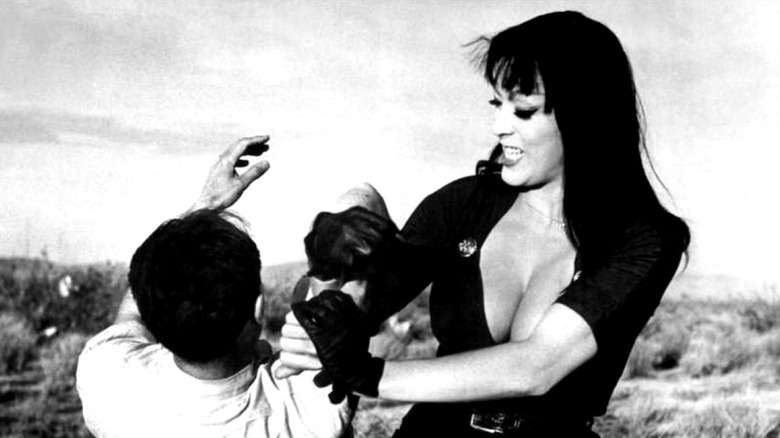
When it comes to exploitation filmmakers, Russ Meyer has one of the most distinctive styles. From "Beyond the Valley of the Dolls" to "Supervixens," he favors stories about beautiful (usually large-breasted) women fighting for and winning power over men. In "Faster, Pussycat, Kill! Kill!" three go-go dancers named Varla, Billie, and Rosie race across the California desert on a wild spree that ends in kidnapping and murder.
In spite of falling under the banner of sexploitation cinema, many consider "Faster, Pussycat" to be something of a feminist classic. Even critics who once decried the film as sexist drivel, like Village Voice queer feminist critic B Ruby Rich, would change their minds decades later. Yes, Russ Meyer's gaze permeates the film and makes it clear which assets of his leads he is interested in showcasing, but it is also a 1960s film in which women are allowed to smoke, drink, fight, and outsmart men. This somewhat unusual characterization of women in film for the time, along with Tura Satana's powerhouse performance as Varla, gives an over-the-top lustful exploitation flick an empowering undertone that only makes it even more fun to watch.
Zombie (1979)
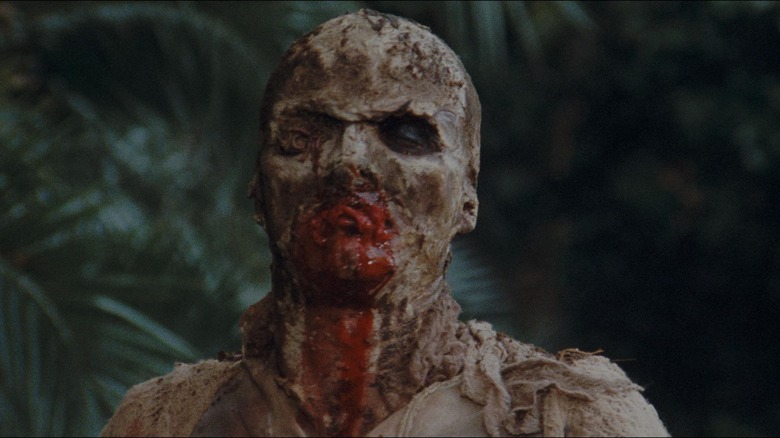
We're not done with Lucio Fulci's filmography just yet. Like his horror film characters fleeing dark forces they don't quite understand, there is no escape. Originally released as "Zombi 2," the film known as "Zombie" was intended as a sequel to "Zombi," a European re-cut of George Romero's "Dawn of the Dead," edited by Dario Argento.
"Zombie" tells the story of an island populated with undead residents that rise from their graves to attack the living. When Anne Bowles (Tisa Farrow) learns that her father disappeared after a trip to this island and his boat has turned up abandoned, she decides to investigate. Accompanied by a journalist named Peter (Ian McCullogh), Anne heads to the island to uncover her father's fate. There, waiting for them, is a zombie infection, an ancient curse, and an army of flesh-eating undead. The film is creepy, nasty, often shocking, and features some awesomely awful special effects makeup. Also, there's a scene where zombies fight a shark. Just thought you should know.
The Street Fighter (1974)
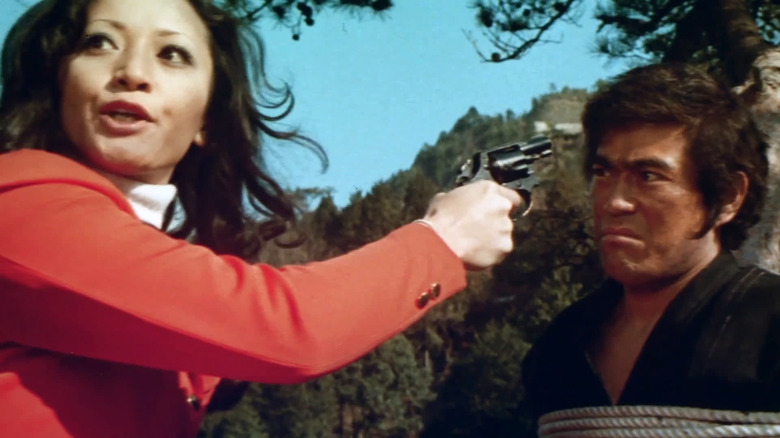
This next martial arts film comes from Japan and focuses on karate as its fighting style of choice. The 1974 film was directed by Shigehiro Ozawa and stars Sonny Chiba as Takuma Tsurugi, an extremely deadly and gifted fighter. The film begins with a signature Tsurugi move called the "oxygen coma punch" and it's off to the races from there as he takes on the task of protecting a business magnate's daughter from the Yakuza.
"The Street Fighter" sets itself apart from other martial arts films of the time with some truly extreme violence, and it has the honor of being the first film to ever receive an X rating in the United States solely for violence, as opposed to sexual content. Tsurugi castrates someone with his bare hands, shatters another man's skull with a punch (and it is shown in detail), throats are ripped out ... pretty much everything you'd be terrified of happening to your face and body during a fight happens.
Death Race 2000 (1975)
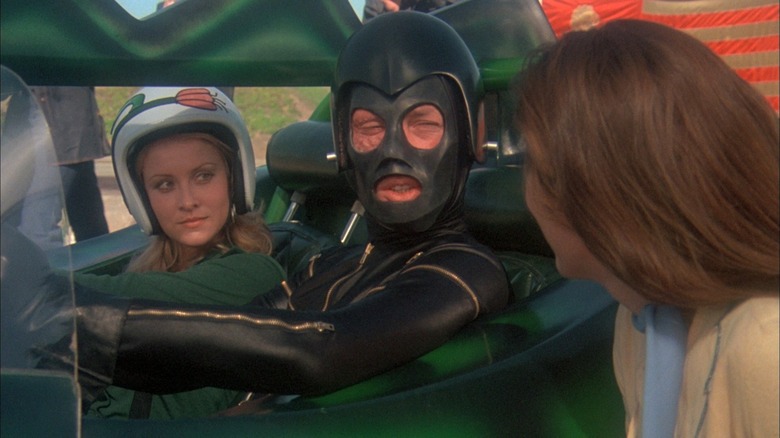
Four years before the first "Mad Max" movie tore onto the dystopian car-based action scene, we had Paul Bartel's "Death Race 2000" to tear up the road. Based on the short story "The Racer" by Ib Melchior, the film takes place in a dystopian version of America circa the year 2000. Following the devastation of the World Crash of '79, the United States is under martial law. The government has created the Transcontinental Road Race, a deadly high-stakes contest famous for themed cars, heightened personas, and a whole lot of senseless violence.
Competitors in the Road Race include Frankenstein (David Carradine), Machine Gun (Sylvester Stallone), Calamity Jane (Mary Woronov), and Nero the Hero (Martin Kove). A resistance group planning to rebel against the totalitarian regime wants to take Frankenstein — a national hero and repeated winner of the race — hostage, but as their plan progresses they learn that the event is even more complex and corrupt than they first thought. The film is pretty much nonstop high-speed hijinks, campy fun, dark humor, and tons of car-based violence.
Halloween (1978)
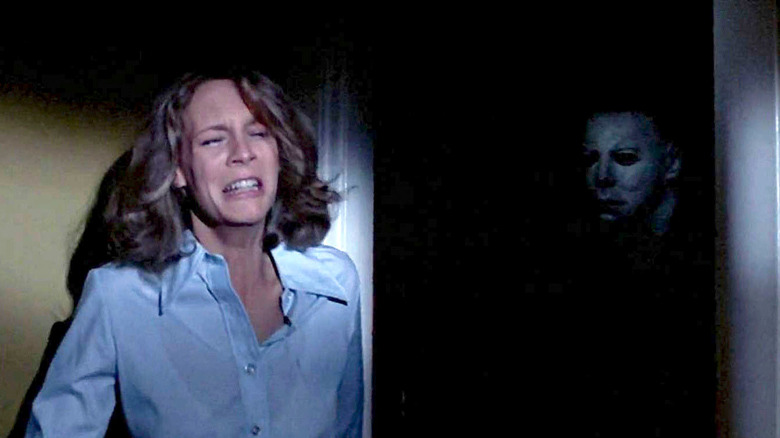
When it comes to slashers about masked killers, if you're not thinking of a certain camp-based hockey mask killer then you're thinking of Michael Meyers in horror titan John Carpenter's "Halloween." Like the holiday it's named after, "Halloween" has been a staple in the lives of horror fans since its release in 1978, and put Jamie Lee Curtis on the map as one of the greatest Scream Queens of all time.
In case you've somehow made it this far without learning anything about it, the film centers around the murderer Michael Meyers, confined to a sanitarium for killing his sister on Halloween night when he was only six years old. Around 15 years after his first kill, he escapes from confinement and makes his way back to his hometown. There he sets his sights on a new victim: teenage babysitter Laurie Strode (Curtis). Propelled by Carpenter's direction, his masterful score, and Curtis' impressive performance, "Halloween" manages to be nail-bitingly tense and truly scary without employing much in the way of violence or gore.
The Psychic (1977)
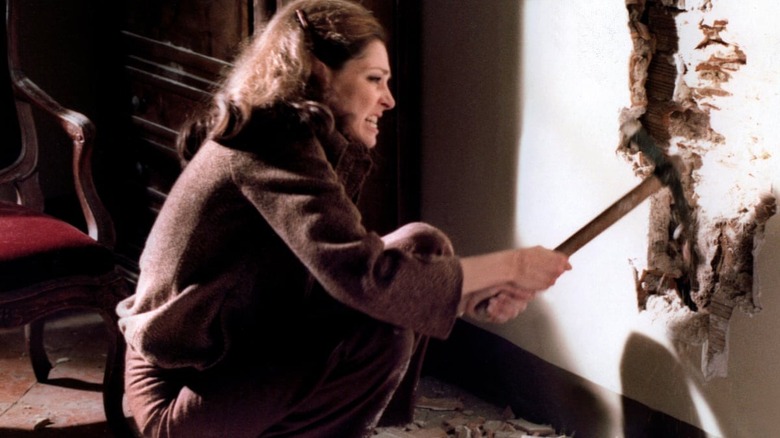
A recent re-release has breathed new life into Lucio Fulci's 1977 "Murder to the Tune of the Seven Black Notes," also released under the title "The Psychic." The sensational, lurid, melodramatic Giallo (Italian mystery thriller) tells the story of a psychic woman named Virginia (Jennifer O'Neill) whose visions lead her to uncover a murder. When Virginia unearths the skeleton of a slaughtered woman in the walls of a house she is renovating, all signs point to her husband Francesco as the guilty party. Virginia seeks advice from a paranormal researcher, who aids her in the investigation as she works to solve the murder and understand her increasingly terrifying visions.
The film is impeccably stylish, with vivid colors and gorgeous fashions that are a treat to behold. It is a considerably more subtle film than much of Fulci's other work, and with a far more coherent plot that has a slow burn comparable to gothic storytelling in the Edgar Allan Poe tradition. Like Virginia, the audience is given tiny pieces of the puzzle one by one, and by the time they all fit together to form a clear picture, it is much too late.
Suspiria (1977)
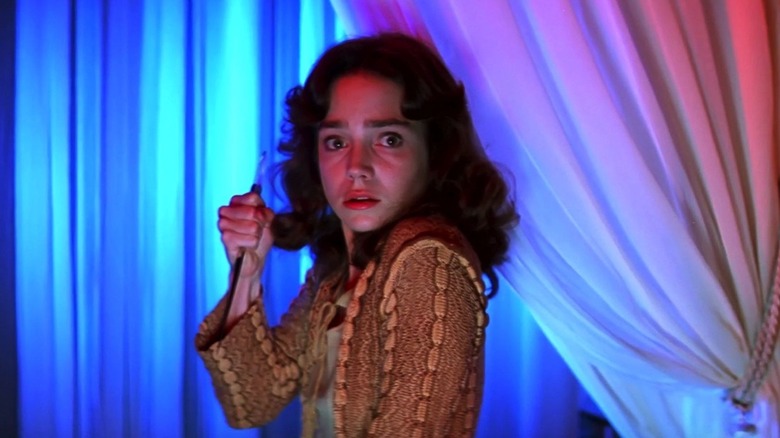
Speaking of Giallos crafted by Italian horror masters, this list would be incomplete without the technicolor terror of Dario Argento's "Suspiria." The first in Argento's "Three Mothers" trilogy, the film explores the potential for horror in the world of ballet, an art form as brutal and competitive as it is beautiful. Jessica Harper stars as Susie Bannion, a young American ballerina who has been accepted into Markos Dance Company, a prestigious German dance academy. When she arrives, however, she quickly realizes that all is not as it seems at this school.
First, she sees another student running away from the building, terrified of something. Then, when she tries to enter the campus, she is refused. From there, the layers of artistic artifice fall away to reveal a world of witchcraft and brutal murder. As far as horror films go, "Suspiria" is one of the prettiest, using vibrant colors (especially red) to delight and unsettle all at the same time. It's thrilling from start to finish and is genuinely harrowing at times. Don't be fooled by the glossy exterior, though, as the various kills are as nauseating as the cinematography is gorgeous.
Dawn Of The Dead (1978)
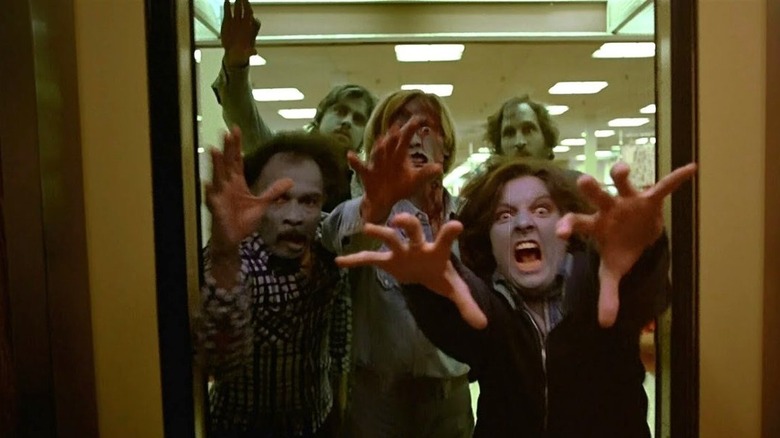
"Dawn of the Dead" is regarded by many as one of the best zombie films of all time. The second such movie from the godfather of the undead George Romero continues to explore the impact of a Z-apocalypse on humanity at large. Similar to "Night of the Living Dead," the film begins with an unexplained phenomenon causing corpses to rise from their graves and feast on the flesh of the living. A group of survivors seeks refuge inside a suburban shopping mall, as humans and zombies alike descend into chaos all around them.
While many zombie films feel like power fantasies where survivors compete in video game fashion to see who can get the most headshots and fire off the best quips, "Dawn of the Dead" does not relish in killing off its undead. They are enemies, something that the protagonists must try to escape, but they were also once human. These zombies are not just drones to be gunned down for fun, they are a reminder of the fragility of human life. When one survivor tries to understand why the zombies are approaching the shopping mall, a character replies, "They don't know why. They just remember. They're us, that's all." "Dawn of the Dead" isn't just a damn good zombie film (though make no mistake, it is that), but a commentary on consumerism, mass hysteria, and the fine line between man and monster.
The Texas Chain Saw Massacre (1974)
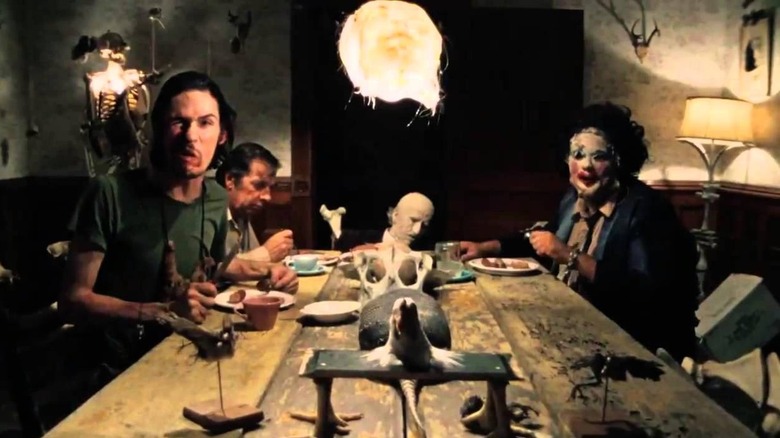
There might be a 2022 entry in the "Texas Chainsaw Massacre" story on Netflix, but nothing compares to the original Tobe Hooper flick. I say this as an earnest compliment: this movie looks like it smells bad. Every frame feels warm, sticky, and tinged with the smell of rotten meat baking in the unforgiving Texas sun. If you wipe your finger across the surface of a screen that "The Texas Chain Saw Massacre" is playing on, I wouldn't be surprised if it came away with a layer of unidentifiable grime. That's what makes it one of the most enduring, effective horror franchises around.
As the viewer sits down to take in the story of unsuspecting young people stumbling into the realm of Leatherface (his mask of human skin, his eponymous weapon of choice, and his twisted cannibalistic family), there are moments where one might feel they're watching something they shouldn't. There is no Hollywood gloss here, no sense of distance from the nastiness onscreen. The horror oozes out to touch you, its hands dry and cracked, congealed blood under its fingernails. The unpleasantness of the film is not an accident of unskilled craft, it's the result of careful filmmaking coupled with a willingness to let the movie be ugly when the time is right, and to sometimes just let it all hang out. When I think of grindhouse cinema, it's always "Texas Chain Saw" that I think of first.
Read this next: The 15 Best '70s Horror Movies Ranked
The post The 20 Best Grindhouse Movies Ranked appeared first on /Film.
0 Comments